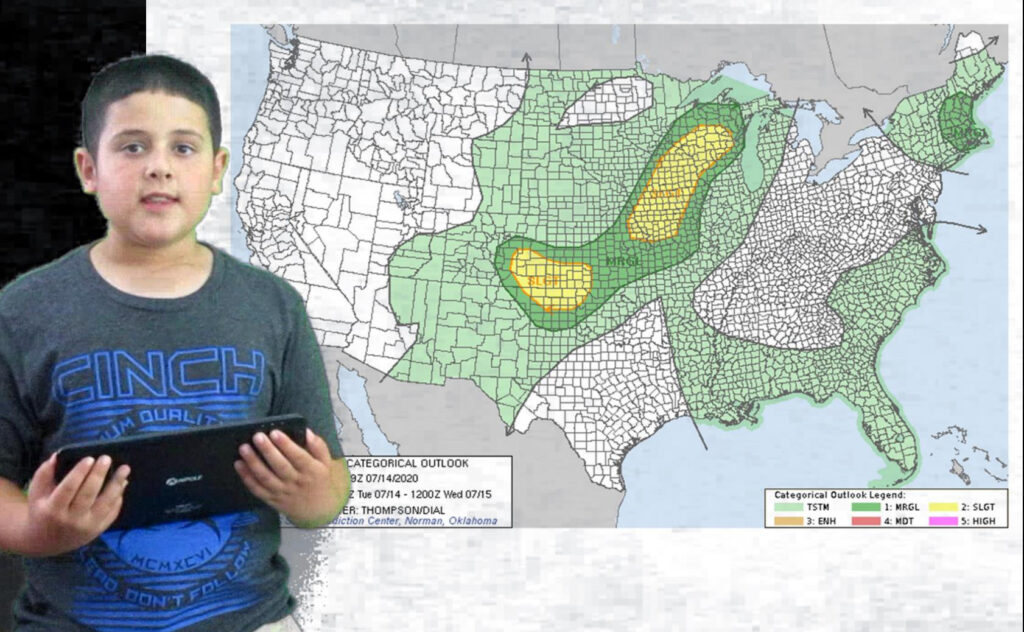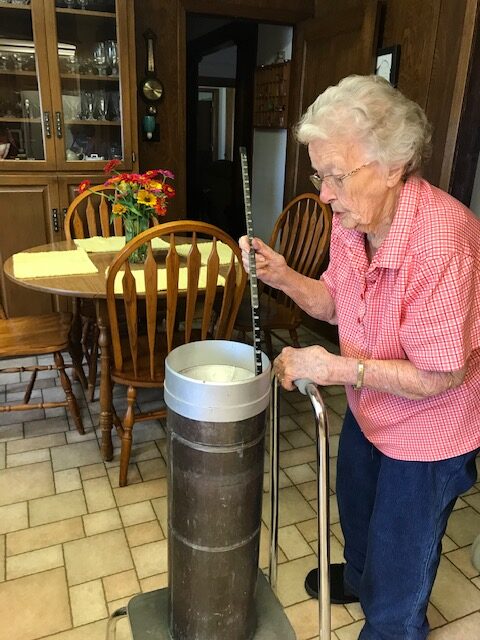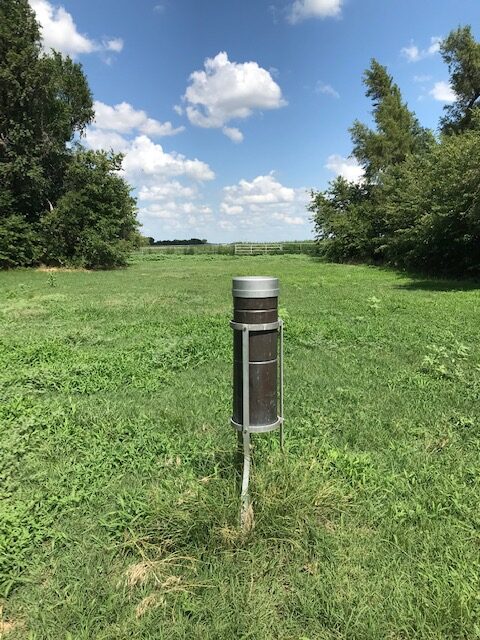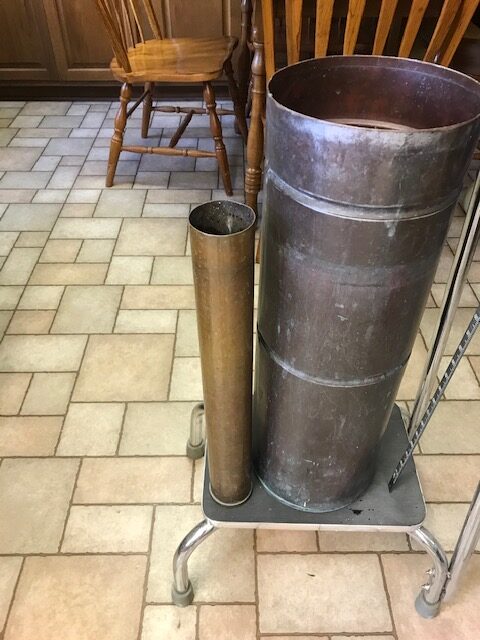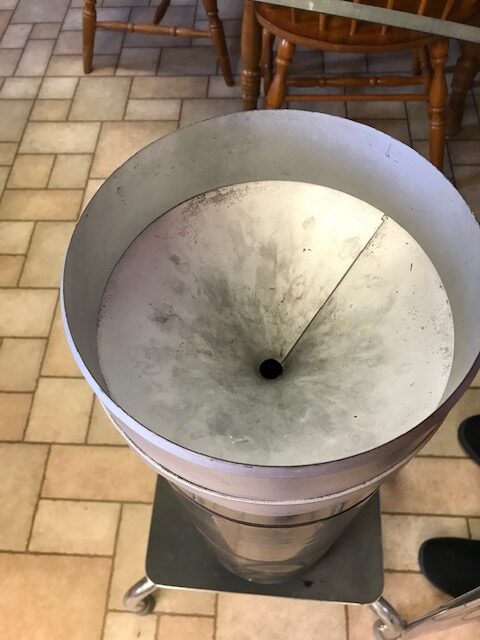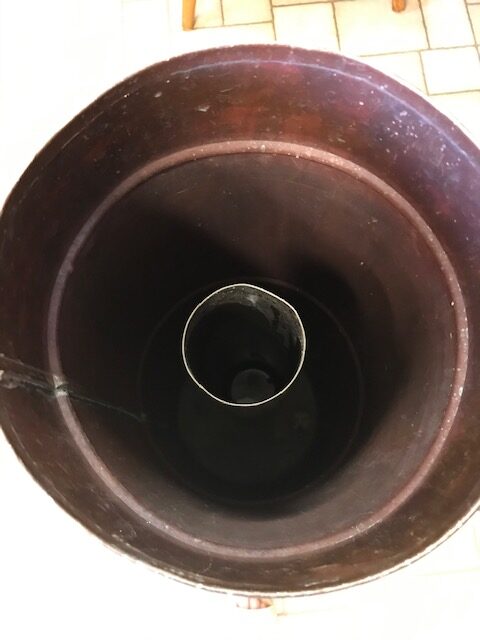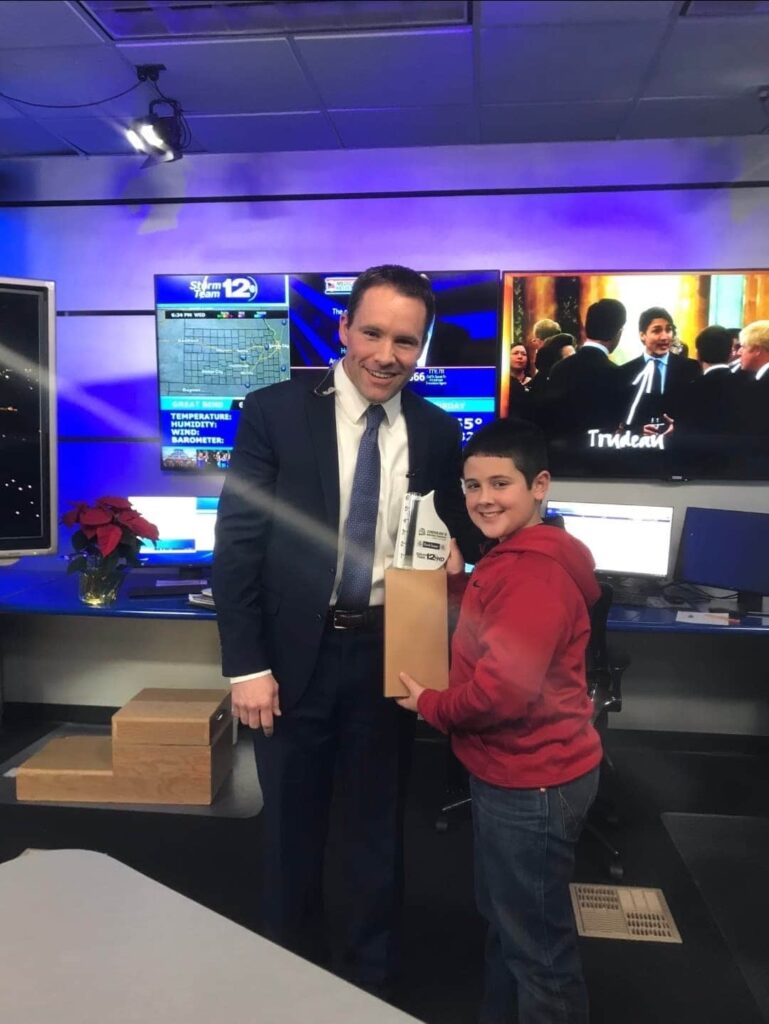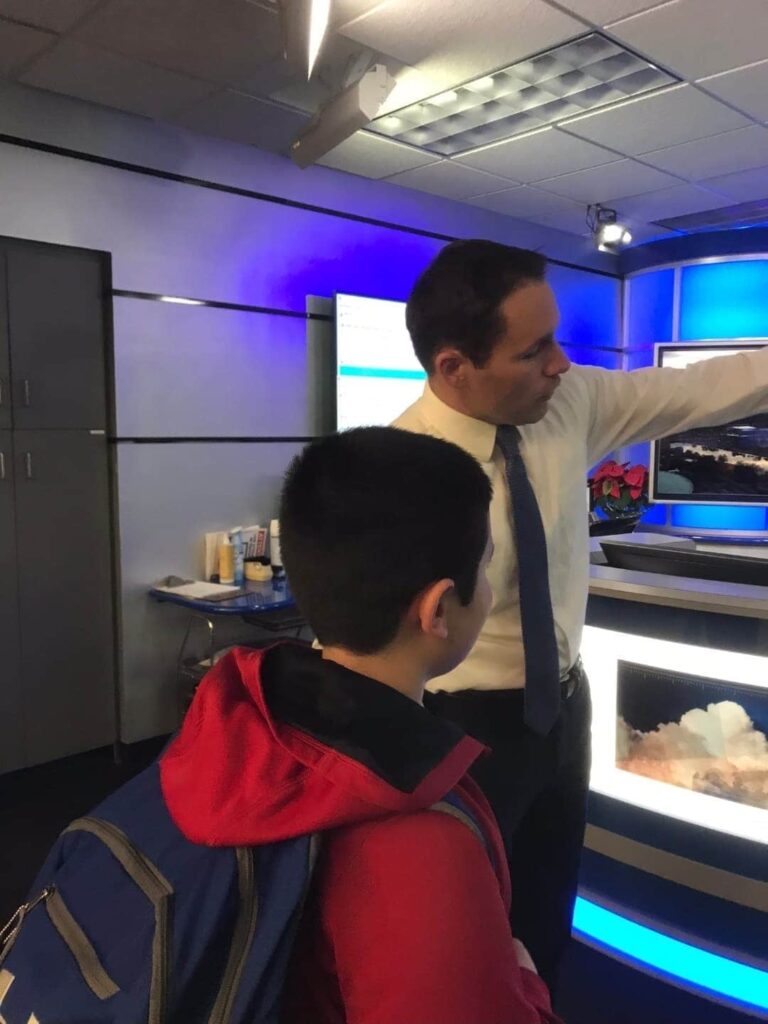We’ve seen a lot of hot, steamy, stormy weather lately. Some of us complain, while others are busy recording the day-to-day changes. Over years, these records help predict future treads, aid in studying floods, droughts, and episodes of extreme heat and cold. They are used for agricultural, engineering, utilities planning and more.
In 1890 an Act of Congress created the Cooperative Observer Program (COOP) to record the temperature and amount of precipitation all over the country. A December 15, 1915 article in the Kinsley Mercury reported twenty-five COOP stations in Kansas.
“The observers here receive no pay but receive thermometers and rain gauges of the same high grade as those in use at regular stations and all the necessary forms for recording and reporting their observations which they forward monthly to the office at Topeka….”
Herman Cudney of Trousdale signed on early as an observer in 1916. Trousdale 1-NE was the first station in Edwards County. I’m wondering if the location was chosen to be halfway between stations in Hutchinson and Dodge City?
Herman’s son Ray and his wife Joy took over in 1949 just 5 years after they were married. After Ray’s death in 1995, Joy has continued to observe and report to the National Weather Service in Dodge City.
The gauge was moved into the house so Joy could demonstrate how precipitation is measured. It has rested outside the Cudney house for 104 years.
The precipitation gauge that Joy uses today is the same one that was issued to her father-in-law in 1916. It has remained in this location for 104 years. In 2019, Joy received the Ruby Stufft Award for seventy years of service. Her family now helps her to continue to record and report. Today Kansas has over 600 observers and the U.S. has over 11,000.
A second Edwards County station was established in 1935 in Kinsley. Jesse Lee of the National Weather Service in Dodge City informed me that it was operated by Cora Lewis, the co-editor of the Kinsley Graphic. Later Myrtle Richardson, who wrote the 4-volume history of Edwards County, took it over.
In 1961, Phil R. Tommer who worked for KP&L became the observer with his wife Marie. In 2001, they received an award for 40 years of service. Currently this station is inactive.
Anther long-term observer, Jack Kersting, established the only other station in Edwards County in Offerle in 1973. In 2008 he received the John Campanius Holm award for 35-years of service. When he died suddenly in 2012, his backup observer, Pam Wetzel took over. In 2017, she received recognition for twenty years of service.
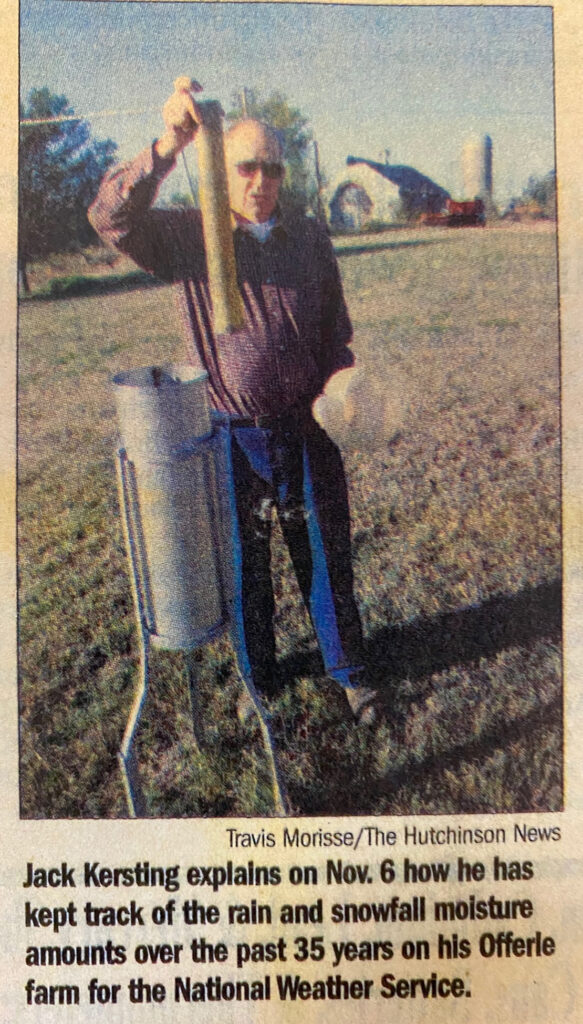
Pam describes the rain gauge as a 3” diameter copper tube inside a larger aluminum tube with a cone on top to catch the precipitation. A measuring stick inserted into the copper tube marks the amount of moisture up to 2”.
(Above pictures are of the Cudney gauge)
Pam explained, “If there is more than 2” of rain like there was recently, the excess goes into the bigger tube. You have to empty the copper tube and then measure the extra.”
The types and quality of weather instruments and the methods of analyzing observations have changed significantly over the years. We now have weather balloons, Doppler radar and satellites, but human observations still provide important information about sky conditions, clouds, and the type and size of precipitation.
Ten-year old Lane Hattrup shares 96-year old Joy Cudney’s interest in weather. Lane is the son of Dustin and Brandi Hattrup of Kinsley. He told me that as a preschooler, he was afraid of storms, but that all changed to fascination when he studied tornadoes in Mrs. Crammer’s first grade classroom.
Lane’s family encouraged his interest in weather with gifts of books on weather which he studied. Family friends, Mark and Vergie Anderson, also recognized his passion and last December took Lane to KWCH in Wichita to meet Chief Meteorologist Ross Jansson. He spent two hours learning how a weather report is created and got to sit and watch an actual news and weather show.
Lane’s visit to KWCH to meet Chief Meteorologist Ross Jansson last December
Last Christmas, Lane received an all-in-one weather station to mount on the roof. “It tells the temperature, humidity, dew point, heat index, wind speed, wind chill, precipitation, and lightning strikes,” explained Lane. “The rain gage even empties itself.”
After school dismissed early for Covid-19, Lane began creating his own weather forecasts on Facebook. That’s when I, along with a few hundred other people, began to follow his forecasts.
When the library acquired a green screen through a grant from the Kansas Library Association, I invited Lane to come and create his forecasts at the library. He and I are now learning together how to produce a weather show. I am so impressed with his focus and passion and hope my production skills will eventually be worthy of his talents.
